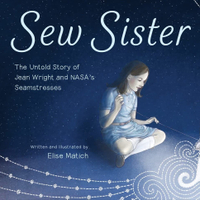'Sew Sister' Jean Wright shares her NASA space shuttle experience with new book
After seeing Apollo 11 land on the moon, Jean Wright had a dream to work at NASA — and she got there.
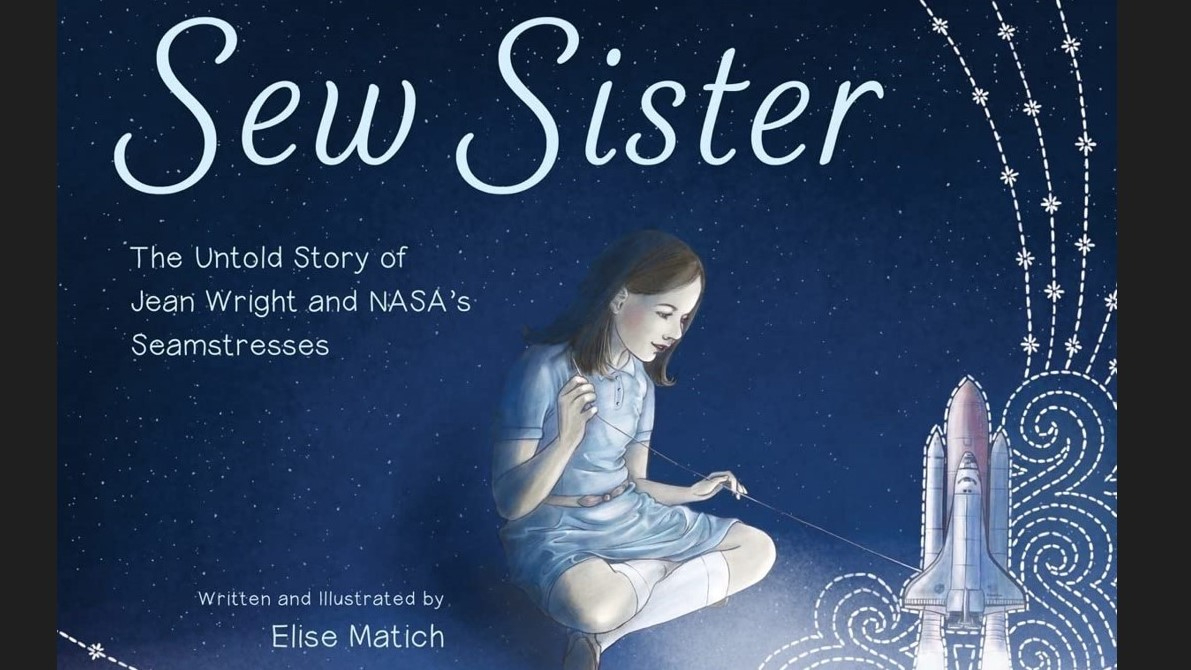
A new children's book features the "Sew Sisters" who created fabrics for NASA's space shuttle program.
"Sew Sister: The Untold Story of Jean Wright and NASA's Seamstresses" (Tilbury House Publishers, 2023) follows the story of how the space shuttle program was served by experts in threading needles and sewing machines. One of those experts was Jean Wright.
Wright was the last "Sew Sister" hired during the space shuttle program and today serves as a Kennedy Space Center (KSC) docent, a program for former NASA employees who support KSC outreach programs and share their stories with the public. Her story intrigued author and illustrator Elise Matich; the two first met in 2019 at the space shuttle Atlantis exhibit where Wright regularly works.
Wright spoke with Space.com about the message she has for the kids reading this book, key NASA projects she helped with, and what it meant to join NASA after so many years of wanting to work at the agency.
Related: Space Shuttle: The First Reusable Spacecraft
Sew Sister: The Untold Story of Jean Wright and NASA's Seamstresses: $17.90 at Amazon
The story of Jean Wright, one of the "Sew Sisters" at NASA, features work this group did on the space shuttle program sewing critical hardware that kept the astronauts safe. The children's book is written and illustrated by Elise Matich.
Space.com: What aspects of your career were you trying to feature in the book?
Wright: I'm touched that I literally was the last seamstress that NASA hired to be in the space shuttle program in my job. It's a long title. We say "seamstress", but it's technically aerospace composite tech soft goods — meaning anything to do with fabric on any type of vehicle that's not metal. It's soft goods or fabric. I got hired in 2005. So I was only there for about six and a half years.
I mentioned in the book that (when we were children) my twin sister Joan and I used to take crayons and paper and draw (astronaut) crew patch designs, hoping that NASA would use them for their flights. Of course, there's professionals that do that. (After sending them) we would get plenty of thanks. but no thanks. But we got pictures and we got autographs. They would give us press briefing sheets, stuff like that for us. So that was a thrill. Being from Michigan and being so far away from Florida, it was just nice to get something like that. I suppose they didn't have to take the time to do that. But they did.
When NASA walked on the moon in 1969, as I mentioned in the book, it was just a calling thing. You're looking at it, for the first time, thinking there's actually people up there. I thought maybe it was a little bizarre, until I had the same core group of friends at NASA's thermal protection facility where I worked, who felt the same way as I did. There were probably about six of us. I thought I was a little crazy, but they said, "No, we know exactly what you meant. We went out there too."
Our goal was one day to work out here. Life has a funny way of being full circle, since Mark Armstrong (son of Neil Armstrong, the first moonwalker) called me to cut the fabric for the 50th anniversary from the Wright Brothers' 1903 flyer, the fabric that his father took to the moon. So it's full circle there. Mark told me, "Since you worked on the shuttle, we thought you would be the first person we've thought to ask to do that." So they did so that was an honor that came full circle.
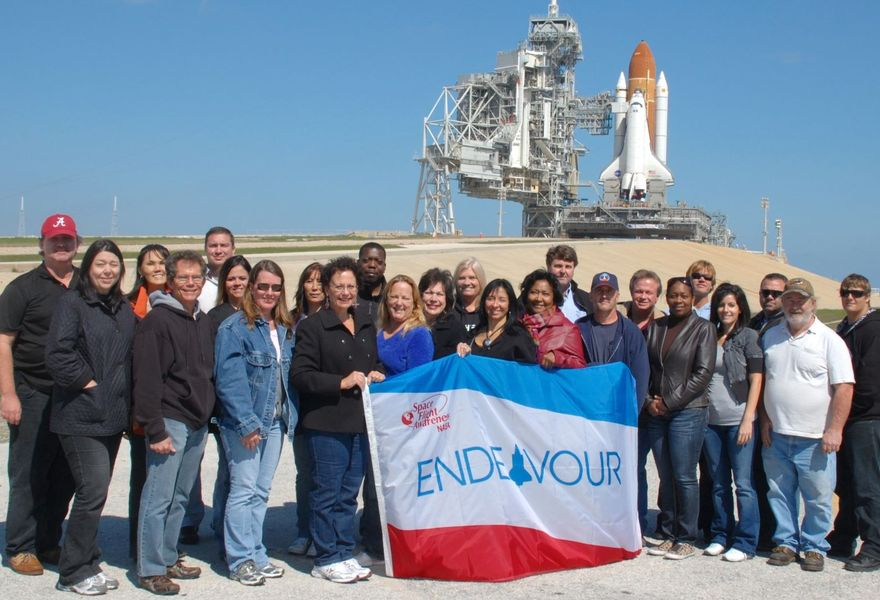
Space.com: How did you get the job?
Wright: Life happens. I got married. I had kids. And then it was time for my husband to retire. He said, "Where would you like to settle?" I said, "Florida, because I never gave up my dream to work here.
I followed NASA TV. I did everything to keep up with it. When I first applied, I didn't hear anything for six months. So I tweaked my resume. And as I mentioned in the book, I literally started going on the computer: studying threads, fabrics, lingo, everything I could to prepare and if by some miracle, I did have a job interview.
Everybody was saying, "You're not going to get it. You're not going to get it. You want it too bad." But that made me even more determined that I was going to get it. I promised myself: I was driving a clunker. I thought,"I live in Melbourne. It's an hour away (from NASA). If I get the job, I'm buying myself a new car."
Anyway, I had an interview and it was two hours long with three different people. And they're asking questions left and right. For some reason, I just felt so comfortable being there. It's like I knew I was supposed to be there. They were amazed at how much I knew, how enthusiastic I was — that I knew the launch schedule for everything. But I just wanted to make sure that I sounded good and right for the part.
From what I understand, I know there were three other ladies after me who interviewed. But I was the first one. So they invited me out to temporary headquarters (at NASA's Kennedy Space Center), because the roof had blown off our building during a hurricane. So we're hanging around at the Shuttle Landing Facility. I thought it was just a courtesy, since they hadn't hired anybody in that position in such a long time
Well, that was on a Thursday. A few days after my interview, a call from KSC comes up on the caller ID. I'm standing next to my oldest daughter and I tell her, "Oh Jenny, this is going to be the most important phone call your mom's ever gotten in her whole life. "And it was them letting me know that they had hired me.
My boss says to me, "Well, the fact that we invited you out to the facility, you had no clue (we were going to hire you)." I said, "No, I thought you guys were just being nice."
Then he said: "Our building was in such a funk. And we were very sad after we lost (space shuttle) Columbia. You had the spark and the enthusiasm and the heart for this. I knew when I saw you. I knew that you were the person that we needed right at that time. I picked you over all of them. I told them when you left the room."
So I got a late start. I was 49. I was almost 50, just a few months shy of 50.
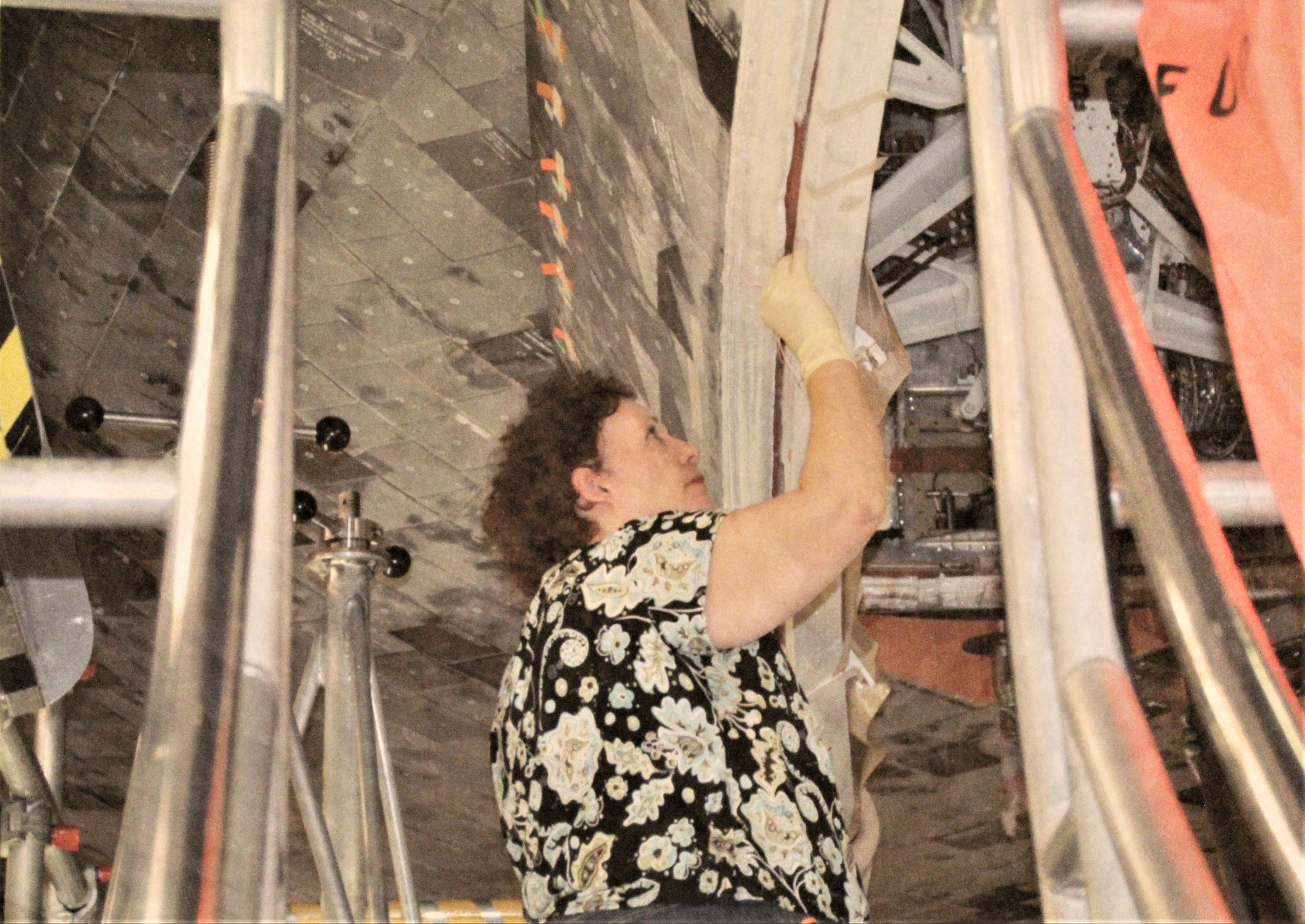
Space.com: It goes show you that you never know, right? People often focus on youth. Getting things done before you're 30. Getting things done before you're 40. But you were there at the right time, very clearly.
Wright: I was. My son was a teenager at the time. He said to me, "You get tired of hearing everybody say, "If you work hard enough, if you do this enough or that enough or whatever, you'll get there. I never really believed it. But when you came home that day and told us that you had gotten your job, I finally believed it. My mother is a perfect example. She waited so long and worked so hard and she got it."
Space.com: In the process of recreating the story for a new audience in your book, how did you pick what to choose in your six years? What types of stories to tell in the book alongside the author and illustrator — because that must have been hard, right?
Wright: I had so many (stories) here. The thing is, when we were in the process of doing the book, they at least had some beautiful pictures that were very gorgeous. But it went through a lot of changes and the publisher said to her, "You need to ask Jean: what thing can we do to spice up the book and make it seem like there's a challenge?
I told them about STS-117, how the (heat shield) blanket had pulled back and how it was kind of critical. It was on the OMS (orbital maneuvering system or engine) pod and NASA actually had to give us 24 hours to replicate that whole section of the OMS. And we had to rebuild literally that whole section, so they could send it overnight to Houston so that they could do testing: thermal testing, wind tunnel testing, everything. Then they sent up the fix to the astronauts.
We hadn't fired up our big sewing machine — that's the one that sews the blanket — in probably a couple of months. So we really had to start everything all over again. And I was still pretty new. But since I had just recently got my certification for the machine, NASA asked if I could start production of our Class 11 blankets, which are two-inch blankets that go on the OMS. So that was kind of exciting.
It's funny because we (the Sew Sisters) were watching the crew on NASA TV. All they have is this little teeny suture kit (on shuttle) and we're laughing because we're thinking, these are Class 11 blankets. Two inches thick. We were curious how the astronaut thinks he's going to fix the blanket with that. So he instead pulled out a stapler, stapling it down. He just took his two fingers and just squished the blanket down to where it needed to go.
Where the heat (of the re-entry) comes over the OMS, the second hottest part on the shuttle is right in the indentation of her wing. So you've got the heat working from there, going to literally right at that perfect angle over top of the OMS. That's why NASA was so concerned. The only reason why we have the blankets that thick back there, though, is NASA requires it.
Based on the OMS, we can't get the shuttle skin hotter than 350 degrees Fahrenheit (175 degrees Celsius). Those blankets are rated for 1,200 to 1,300 F (650 to 700 C). We only saw maybe 800 or 900 F (425 to 485 C) back there during re-entry, which sounds like a lot. But thermally wise, that's really not a lot.
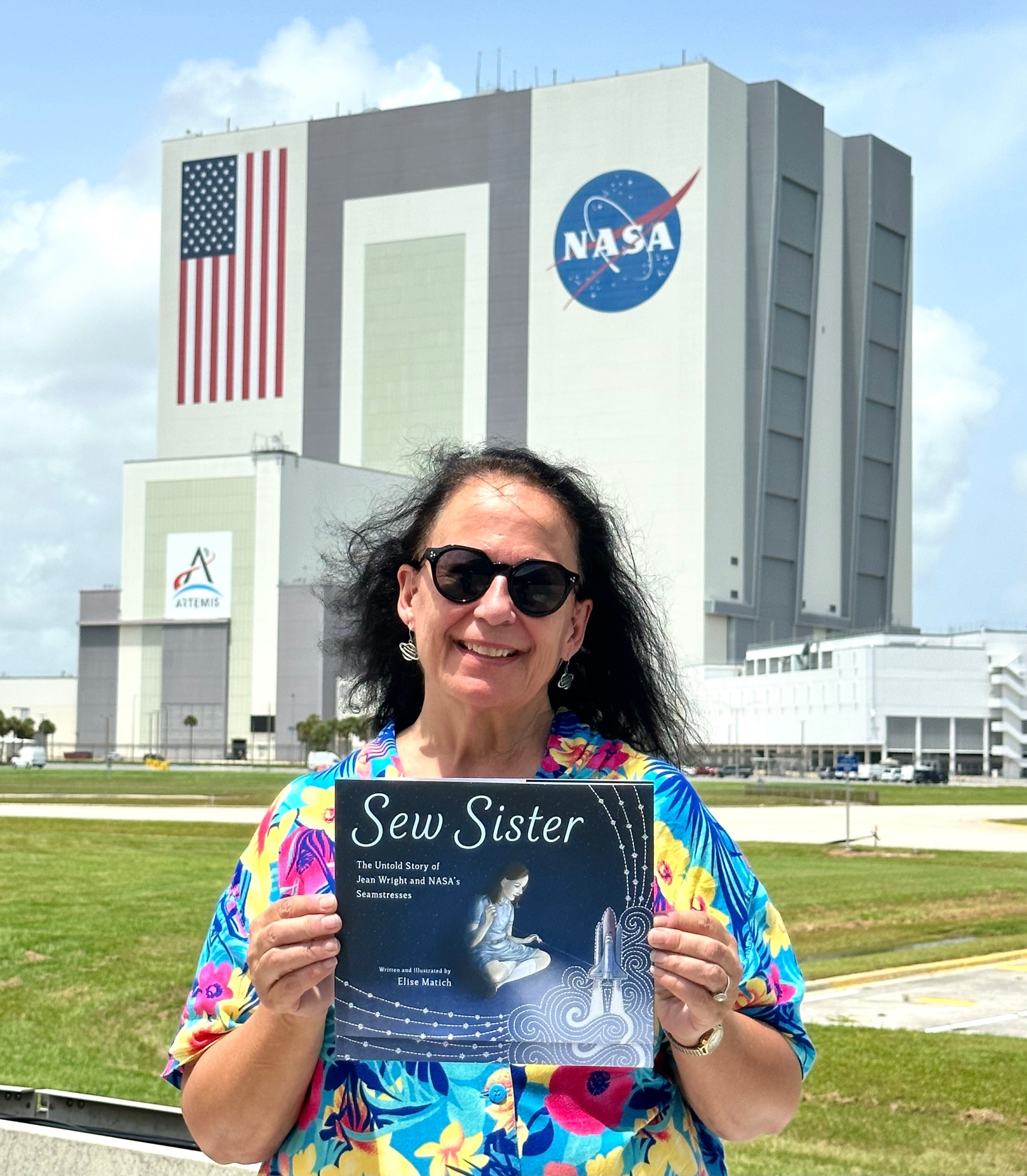
Space.com: Are you still in touch with the other Sew Sisters?
Wright: I am. One of my friends, Brenda, wrote a poem about us. She just messaged me last night. She bought four books and some of them will be coming to our book signing, because we'll be at the Kennedy Space Center Visitor Complex on Nov. 17. But yes, I do keep in touch. It's pretty much Facebook. Unfortunately, I can think of four offhand that we've lost since the shuttle program ended,
We were called the Sew Sisters. That was primarily named by the guys, because downstairs (at KSC) the tiles were built. On occasion they would come upstairs and watch. They would say it looks like a quilting bee, and for some reason one of them started calling us the Sew Sisters.
People don't equate sewing with technical things. They just don't. And I always say well, sewing has been around at least since the early Egyptian times. Thousands and thousands of years. It's still a skill that's needed.
Frustratingly people think when you sew for NASA, you build the spacesuits. I'll go, "No, we built flight hardware." Anything that we send out into space: satellites — rockets — need thermal protection. Because of the materials that we use, some can't go through sewing machines. Or the thread that we use can't go through a sewing machine. Our AB 440 thread, for example, it's too thick.
I've had a lot of invitations from schools to speak. When I give my talks, I encourage the girls. I know some people are frustrated because they're saying, "You're always speaking to girls." But our numbers still aren't represented. I had one woman from the U.K., who is a teacher. She told me, "It's so important that I tell my students about you. I have a boy in my class, who thinks women aren't really much good for anything. But I showed him a picture of you next to the shuttle, and told him she built spacecraft. He said, 'Maybe girls are good for something.'"
Get the Space.com Newsletter
Breaking space news, the latest updates on rocket launches, skywatching events and more!
Join our Space Forums to keep talking space on the latest missions, night sky and more! And if you have a news tip, correction or comment, let us know at: community@space.com.

Elizabeth Howell (she/her), Ph.D., was a staff writer in the spaceflight channel between 2022 and 2024 specializing in Canadian space news. She was contributing writer for Space.com for 10 years from 2012 to 2024. Elizabeth's reporting includes multiple exclusives with the White House, leading world coverage about a lost-and-found space tomato on the International Space Station, witnessing five human spaceflight launches on two continents, flying parabolic, working inside a spacesuit, and participating in a simulated Mars mission. Her latest book, "Why Am I Taller?" (ECW Press, 2022) is co-written with astronaut Dave Williams.
